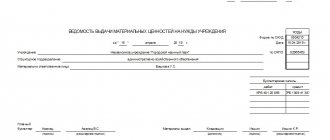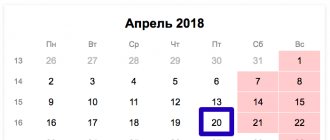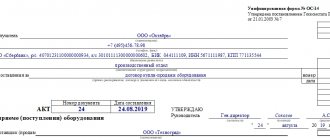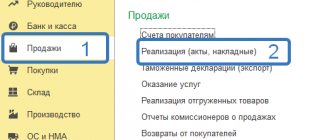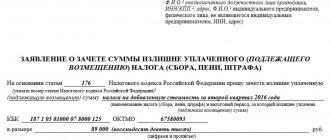What transactions are reflected in account 62 in accounting?
According to the recommended Chart of Accounts, a business entity must use account 62 to record transactions with buyers and customers.
The law establishes that two types of debts must be kept in the account:
- To the company for goods sold, or work and services performed;
- To buyers for advances received from them.
When selling products or performing work, it must be immediately shown in the debit of the account. At the same time, the same amount is indicated on the sales accounts (90, 91) or the gradual execution of work. After receiving payment from the counterparty, it should be reflected on the credit of the account, simultaneously with the debit of the cash settlement accounts.
If the buyer makes payment before actually receiving goods or work, then this receipt is reflected in account 62 as an advance received. Since this amount is accounts payable, it must be recorded in separate accounts. It is not possible to show both debts collapsed.
Also, the buyer may not repay the debt, but issue his own bill. This paper will act as a deferment of payment and a guarantee of further repayment of the debt.
Attention! This kind of payment must be taken into account in account 62, but separately from simple debt. However, if the buyer issues a third party’s bill of exchange as payment, then such a step is already recognized as a financial investment and is subject to accounting on account 58.
Characteristics of account 62 “Settlements with buyers and customers”
The adopted chart of accounts establishes that account 62 “Settlements with buyers and customers” is active-passive. This means that he can have two balances at the same time - both debit and credit.
This means that this account can immediately show both the company’s receivables and payables:
- A balance in the debit of the account means that buyers have an unpaid debt to the company for work performed or goods shipped.
- The loan balance shows that the organization has received an advance payment for future deliveries of goods or performance of work, but has not yet fulfilled its obligations to buyers or customers.
What does the debit and credit of the account reflect:
- The debit of account 62 shows the amounts of work performed or goods shipped, for which documents for payment were issued to counterparties. In addition, debit can also take into account the amounts of payments that were returned to customers due to failure to fulfill obligations to them.
- Credit 62 of the account takes into account the amounts of money that were transferred by buyers of goods or customers of work for received goods and materials. The amounts that were received as an advance payment for future work or shipment of goods are also indicated here.
The process of determining the balance at the end of the period under review depends on what exactly the balance was at the beginning. If it was debit, then you need to add the debit turnover to it and subtract the credit turnover. If the result is positive, then this balance is entered as a debit at the end of the period. If it turns out to be negative, then it is transferred to credit, but without the minus sign.
You might be interested in:
08 accounting account - “Investments in non-current assets”
If at the beginning of the period under consideration the balance was in credit, then you must first add the credit turnover to it, and then subtract the debit turnover. When determining which part of the balance sheet to record the final balance in, a similar rule applies - if it turns out to be positive, then in credit, otherwise - in debit.
Attention! The balances of account 62 must be shown when preparing the balance sheet, but in different sections. The debit balance is accounted for in accounts receivable and recorded as an asset. At the same time, it is shown minus the reserve for doubtful debts (if it was created). The credit balance constitutes accounts payable and is reflected in liabilities.
Description of account 62
Account 62 is active-passive, so it can have both a credit and a debit balance.
IMPORTANT! The balance at the beginning and end of the period must be reflected in subaccounts in detail. This is due to the fact that the debit balance is the debt of customers, and the credit balance is the prepayment received for future shipments and work.
For a breakdown of accounts payable and receivable, see the material.
It is convenient to conduct analytical accounting for this account both in the context of subaccounts and for each customer. Many accounting programs allow you to support such analytics. As a result, turnover for the account as a whole is formed, and if necessary, it is always possible to generate SALT for each customer. Such a report can also serve as the basis for drawing up a statement of reconciliation of settlements with the counterparty.
In what cases are receivables revalued, find out from the Ready-made solution from ConsultantPlus. Trial full access to the system can be obtained for free.
What subaccounts are used?
On account 62, it is necessary to record both the process of shipping products to customers or providing services to consumers, and the receipt of payment from them.
To do this, the following subaccounts can be opened on the account:
- Account 62.01 - to reflect the payment that was transferred under normal conditions;
- Account 62.02 - to account for advances received from buyers for future supplies of products;
- account 62.03 - for accounting for bills received from buyers.
Additional accounts may also be opened for each of these sub-accounts, depending on the payment currency. In addition, for his convenience, an accountant can organize analytical accounting for each counterparty or concluded agreement.
In addition, it is allowed to keep records in the following context:
- According to the actual payment method (advance payment, payment upon delivery, etc.);
- By the deadline for payment for the supply (whether there was a delay or the repayment period did not occur);
- By the presence of the bill (whether it was presented, whether the maturity date has arrived, etc.).
Attention! The accountant has the right to independently decide how to build accounting for customers in the enterprise. Analytics should allow you to check account balances for overdue debts.
Which accounts does it correspond with?
Accounting account 62 can correspond with the following accounts.
From the debit of account 62 to the credit of the following accounts:
- account 46 - when writing off the cost of the next stage of work;
- account 50 - when returning from the cash register previously deposited funds to the buyer;
- account 51 - when returning funds previously deposited by the buyer from the current account;
- account 52 – when making a return from a foreign currency account of funds previously deposited by the buyer;
- account 55 - when performing a return from a special account of funds previously deposited by the buyer;
- account 57 - when making a refund by postal order or similar method;
- account 62 - when offsetting a previously received advance to repay the buyer’s debt;
- account 76 - when conducting mutual offsets;
- account 79 - when conducting a sale through the head office or branch;
- account 90 - when reflecting the shipment of main products;
- account 91 - when reflecting other sales (fixed assets, materials, etc.).
On the credit of account 62, entries can be made to the debit of the following accounts:
- Account 50 - when reflecting payment for delivered goods to the cash register;
- account 51 - when reflecting payment for delivered goods to the current account;
- account 52 – when reflecting payment for goods delivered to a foreign currency account;
- account 55 – when reflecting payment for goods delivered to a special account;
- account 57 - when reflecting payment by the buyer through a savings account, postal order, etc.
- count 60 - when carrying out mutual offsets;
- account 62 – when offsetting a previously received advance to repay the buyer’s debt;
- Account 63 - when writing off a bad debt using a pre-formed reserve;
- account 66 - when offsetting the supply of products against a short-term loan;
- account 67 - when offsetting the supply of products against a long-term loan;
- account 73 - when selling products to company employees;
- account 75 - when conducting mutual offsets according to the requirements of the founders;
- account 76 - when conducting mutual offsets;
- account 79 - when conducting a sale through the head office or branch;
You might be interested in:
Account 19 in accounting: what is it used for, subaccounts, characteristics, postings
Balance sheet for account 62
By its structure, count 62 is active-passive. This means that it can contain both a debit and a credit balance. In order to calculate them correctly, it is necessary to record transactions for each customer.
Modern computer programs for accounting, for example, 1C, allow you to automatically carry out this kind of accounting, as well as create not only general registers for synthetic and analytical accounts, but also build a balance sheet for each customer.
The balance sheet is a special accounting register. The law does not define strict conditions for how it should look, but it does establish mandatory details for use in it.
These include:
- Name of company and register;
- Start and end days of the register formation, as well as the period;
- In what monetary values is it compiled?
- Indication of responsible persons.
If you are preparing a balance sheet document for account 62, you must adhere to the following rules:
- When compiling debit turnover, it is necessary to reflect all operations of the sale of inventory items to customers. In this case, it is necessary to enter information about the document on the basis of which the sale is made - delivery notes, invoices, UPD, etc. In addition, the debit turnover must reflect the return of funds to the buyer if the delivery of goods or provision of services was not made .
- When registering a credit turnover, it is necessary to include the repayment of the buyer’s debt for the products sold, or the crediting of an advance payment. Here you must also indicate the details of the documents for which the payment was made - PKO, payment orders, etc.
Sample statement (download)
A sample form for the turnover sheet for account 62 could be as follows:
| Account/Counterparty/Agreement | Balance at the beginning of the period | Period transactions | balance at the end of period | |||
| Debit | Credit | Debit | Credit | Debit | Credit | |
| TOTAL | ||||||
You can get free statements for account 62 from our website using the direct link here.
Also see “How to create a balance sheet for account 60: sample.”
Read also
31.08.2018
Typical entries for accounting account 62 for dummies
Let's look at typical transactions for account 62:
| Debit | Credit | Description |
| Selling goods to a buyer | ||
| 62/1 | 90/1 | Goods shipped to buyer |
| 90/2 | 41, 43 | The cost of goods sold is written off |
| 90/3 | 68 | VAT charged on sales |
| 50, 51 | 62/1 | The goods are paid for by the buyer |
| 90/9 | 99 | The financial result from the sale was calculated |
| Purchasing goods with prepayment | ||
| 50, 51 | 62/2 | Received advance payment for goods |
| 76 | 68 | VAT has been charged on the advance payment |
| 62/1 | 90 | The shipment has been made to the buyer |
| 90/3 | 68 | VAT has been charged on the sale |
| 62/2 | 62/1 | The prepayment has been offset |
| 68 | 76 | VAT has been deducted from the advance payment |
| Payment for goods by bill of exchange | ||
| 62/1 | 90/1 | The goods have been shipped to the buyer |
| 90/3 | 68 | VAT charged on the sale amount |
| 62/3 | 62/1 | A promissory note was received as payment |
| 50, 51 | 62/3 | The buyer has made payment |
| Postings for writing off debt on account 62 | ||
| 91 | 62 | Debt was written off for expenses if no reserve was created, or for the amount of debt not covered by the reserve |
| 63 | 62 | The debt was written off within the created reserve |
| 007 | – | The written-off debt was taken into account in the off-balance sheet account |
| Other postings to account 62 | ||
| 62 | 50, 51 | Refund of advance payment for undelivered products |
| 62 | 76 | Settlement has been made |
| 62 | 91 | Sales of non-core products were made |
| 60 | 62 | Settlement has been made |
Basic postings
The final balance of SALT account 62 is displayed in the balance lines. If the loan balance, i.e. debt formed as a result of unshipped goods, then the amount will be in the liability side of the balance sheet. With a debit balance, this is a receivable - it increases the assets of the enterprise and is in the asset balance sheet.
Account 62 is correlated in debit and credit with the following accounts.
By debit 62:
- 46 - execution of unfinished work;
- 50 - cash payment in cash;
- 51, 52, 55 — payment to the bank’s personal account;
- 62 — mutual settlements with counterparties;
- 76 - settlement procedure with buyers (debtors and creditors);
- — revenue from trade;
- 91 - income and expense transactions not related to the company’s activities.
For loan 62:
- 50 - advance payment from buyers using the cash method;
- 51, 52, 55 - advance payment from buyers through a current account;
- — settlement transactions with performers;
- 62 — mutual settlements with counterparties;
- 63 - doubtful debts in reserve;
- — operations on short-term loans;
- 67 - operations on loans and credits for long periods;
- 73 — other settlements with employees;
- 76 - settlement procedure with clients (debtors and creditors);
- 79 - calculations for intra-production operations.
In practice, for economic conduct of commercial activities, the main operations on account 62 are:
- Movement of settlements with customers-buyers for shipped goods.
- Advance payments from buyers.
- Operations with promissory notes.
General settlement transactions with customers
The supplier Partner LLC concluded an agreement with the client Zarya LLC for the sale of office supplies in the amount of 21,510 rubles, incl. VAT RUB 3,281.19 Payment for goods after shipment.
The accountant of Partner LLC creates the following entries in the accounting register:
- Dt 62.01 Kt 90.01 – 21,510, revenue from the sale of stationery (based on invoice);
- Dt 90.02 Kt 41 – 10,000, writing off the cost of office supplies based on calculations;
- Dt 90.03 Kt 68 - 3281.19, VAT accrued on the invoice;
- Dt 51 Kt 62.01 – 21 510, payment from the customer for stationery according to a payment order;
- Dt 90.09 Kt 99 – 8228.81, profit from the sale of stationery.
Accounting for advances received
On June 1, 2021, the supplier Partner LLC entered into an agreement with the buyer Zarya LLC for the supply of stationery in the amount of 21,510 rubles, incl. VAT—RUB 3,281.19 The contract stipulates an advance payment of 30% of the amount of shipped products, which is 6,453 rubles, incl. tax 984.36.
The advance payment was transferred on June 2, 2021 to the current account of Partner LLC. On June 7, 2021, goods were shipped to Zarya LLC in the amount of 21,510.
On June 9, 2021, Zarya LLC transferred the remaining amount in the amount of 15,057 rubles, incl. tax (VAT) 2296.83 rub. Based on primary documents, the accountant creates the following entries:
- Dt 51 Kt 62.02 – 6453 rubles, receipt of advance payment to the current account by payment order;
- Dt 76 Kt 68 - 984.36 (6453 * 18% / 118%) rubles, VAT on the advance is determined (an invoice is issued for the amount of the advance, one copy - to the buyer);
- Dt 62.01 Kt 90.01 – revenue of 21,510 rubles is reflected, according to the delivery note;
- Dt 90 Kt 68 – RUB 3,281.19, VAT on goods shipped;
- Dt 68 Kt 76 – 984.36 rubles, VAT accepted for accounting, deduction from advance payment;
- Dt 62.02 Kt 62.01 – 6453 rubles, advance payment from Zarya LLC is credited;
- Dt 51 Kt 62.01 – 15,057 rubles, funds were credited to the bank account (remaining amount);
- Dt 68 Kt 51 – 3281.19 rubles, VAT transferred to the budget.
If the organization has received an advance payment, then after the goods have been shipped, it must be closed by internal posting to subaccounts, otherwise erroneous data will be provided and the organization’s reports will be unreliable. Posting Dt62.02 Kt61.01 closes the advance payment. Advice to accountants: constantly check the movements of transactions on account 62.
"Bills received"
A bill of exchange is a security, a debt obligation that gives the owner (the holder of the bill) the right to demand payment from the drawer for goods shipped or work performed within a certain period of time.
The issuance of such a bill means a deferred payment. For transactions on bills of exchange, a subaccount 62.03 “Bills received” is opened.
Let's give an example with accounting entries: Partner LLC sold stationery to Zarya LLC in the amount of 23,500 rubles, incl. VAT 3584.75. Zarya LLC issued a promissory note to Partner LLC with a nominal amount of 24,000 rubles, the following entries are made in the accounting department:
- Dt 62.01 Kt 90.01 – 23,500, stationery shipment completed;
- Dt 90.03 Kt 68 – 3584.75, VAT charged;
- Dt 62.03 Kt 62.01 – 23,500, receipt of a bill of exchange;
- Dt 008 – 24,000, the bill was capitalized on an off-balance sheet account.
When paying a bill, the postings will be as follows:
- Dt 51 Kt 62.03 – 23,500, bill paid;
- Dt 51 Kt 91.01 – 500, the difference between the nominal price of the bill and the purchase price (24,000 – 23,500);
- Kt 008 – 24,000, writing off the bill from an off-balance sheet account.
If there are overdue obligations on bills of exchange, then this amount relates to accounts receivable.
